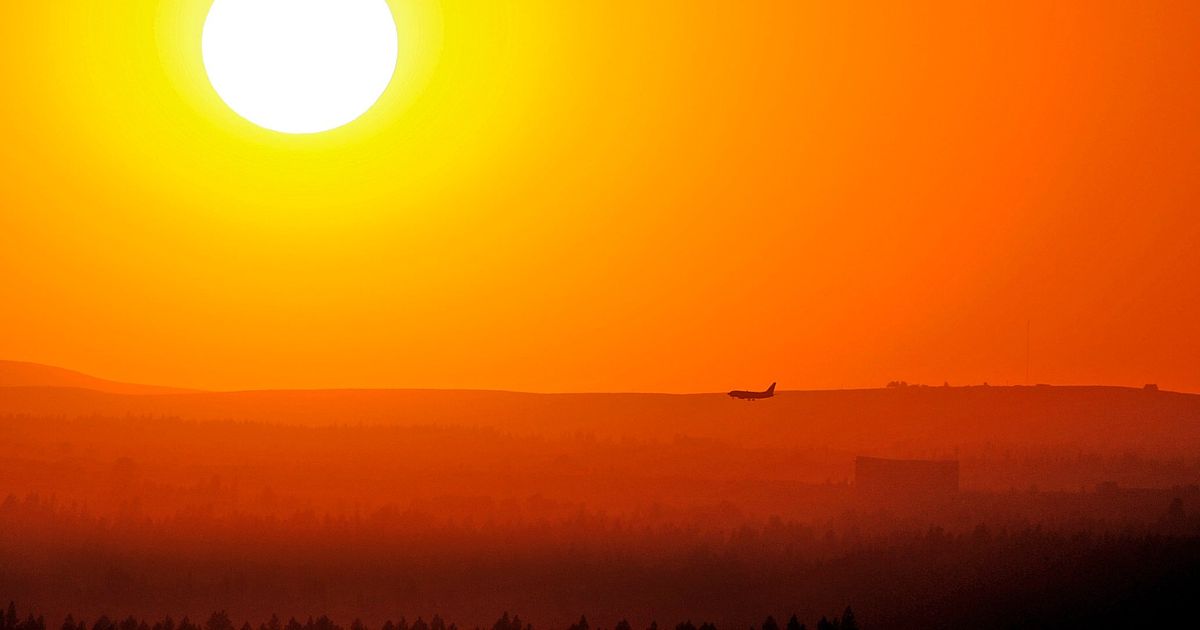World
Ask Dr. Universe: The sun powers our world

Washington State University
Dr. Universe: Why do we need the sun? – Samai, 9, Ohio
Dear Samai,
Right now, the sun is shining through my window. It feels warm on my face.
I talked about the sun with Guy Worthey. He’s a professor of astronomy and physics at Washington State University.
He told me that our lives depend on the sun.
“The sun keeps you warm and powers everything,” Worthey said. “Without it, Earth would be a frozen nightmare.”
The sun is a yellow dwarf star. It’s made of super-hot gases. Since it isn’t solid, the part of the sun we call the surface is really its inner atmosphere–called the photosphere. If you could stick a thermometer into the photosphere, it would read 10,000 degrees Fahrenheit. But the sun’s outer atmosphere – called the corona – reaches a whopping 3.5 million degrees. Toasty!
Fortunately, the sun is about 93 million miles from Earth. Our planet is in the Goldilocks Zone. That’s the distance from the sun that’s just right – so we’re not too hot or too cold. It’s why Earth has liquid water and supports life.
The average temperature on Earth’s surface is 59 degrees. Compare that with our nearest neighbors. Venus has a temp of 867 degrees, and Mars is a frigid minus 85 degrees.
The sun also provides the energy we need to live. Plants use green organs in the cells of their leaves – called chloroplasts – to collect the sun’s light. Then the plant changes the light energy into chemical energy.
Plants save some of that energy to use later. They store it as complex sugars in the plant’s body. When animals like us eat plants, we get all that stored energy for ourselves. Animals that eat animals – like wild cats chasing down a rabbit or humans enjoying a burger – take in the energy stored by those animals after they ate plants.
The third thing the sun does is hold Earth in its orbit. The sun pulls on the Earth just like the Earth pulls on your body so you don’t float off into space. But Earth is moving really fast. As the sun pulls and the Earth moves, we wind up orbiting around the sun.
So, what would happen if the sun disappeared?
“We would go sailing away into interstellar space,” Worthey said. “We would leave our buddies like Venus and Mars. We would keep the moon, but we wouldn’t be able to see it because everything would be dark.”
Without the sun pulling on it, Earth would zoom off, traveling nearly 19 miles per second. Without the sun’s light, it would be completely dark, and plants wouldn’t be able to make food. That means no food for animals either.
Plus, it would be seriously cold. Worthey told me that, if you take away the sun’s heat, the universe’s temperature is 3 degrees above absolute zero.
Absolute zero means the lowest temperature possible. That’s about minus 459 degrees. At that temp, all the atoms that make up everything will basically stop moving.
It’s hard to imagine what that would be like – but we don’t need to worry about it. Our star will be there shining down on us for billions of years to come. For us, it’s sun-stoppable.
Sincerely,
Dr. Universe
Adults can help kids submit a question at askdruniverse.wsu.edu/ask.









